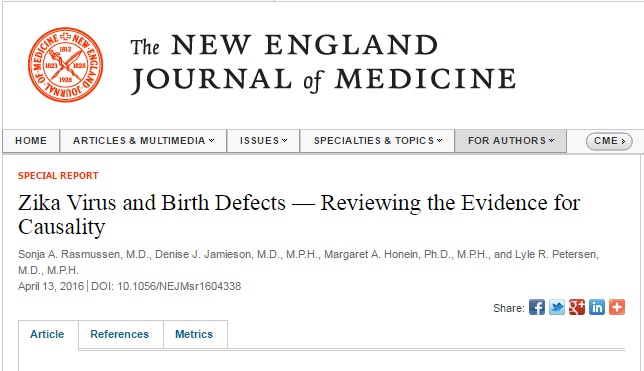You are here
Working with CDC and Partners to Meet Zika Response Needs
Zika virus “is probably the most complicated issue CDC has ever faced,” said Dr. Lyle Petersen, director of the Centers for Disease Control and Prevention’s (CDC) division of vector borne diseases and incident manager for CDC’s Zika response, in a recent Time interview. “Everything is not straightforward and every single center at CDC is involved, which is unprecedented.”
Through the work of CDC and others, it’s becoming apparent that Zika poses a clear and present danger, particularly for high-risk areas, including the Caribbean, the Americas and U.S. territories.
 In recent weeks, CDC experts published a landmark study in the New England Journal of Medicine that identified a causal relationship between Zika and negative birth outcomes and other serious brain anomalies. CDC found that Zika virus infection in pregnancy can cause microcephaly and other brain defects and has been linked to pregnancy loss and problems in infants, including eye defects, hearing loss and impaired growth.
In recent weeks, CDC experts published a landmark study in the New England Journal of Medicine that identified a causal relationship between Zika and negative birth outcomes and other serious brain anomalies. CDC found that Zika virus infection in pregnancy can cause microcephaly and other brain defects and has been linked to pregnancy loss and problems in infants, including eye defects, hearing loss and impaired growth.
President Obama requested $1.9 billion in funding from Congress for the Zika response to go toward a variety of preparation efforts, such as mosquito control, Zika research and vaccine development, and training for health experts to deal with the virus. But this funding has not been approved. Instead, $589 million is being redeployed from Ebola funding to go toward the government’s Zika response. And more funding is needed.
We know from responses to the West Africa Ebola epidemic, the Haiti earthquake and Hurricane Katrina that government funding can meet many needs, but it is not sufficient to meet all response needs or always meet them in adequate time. A collaborative and coordinated response is required, and that’s where the CDC Foundation and our partners can help provide essential support.
 The CDC Foundation has been working for several months on supporting CDC’s Zika response efforts, particularly those focused on pregnant women and women of reproductive age. To date, we have been working to bring in products and funds to mount response efforts, such as Zika Prevention Kits for pregnant women, communications campaigns to educate key audiences and the Zika Action Planning Summit for state and local senior officials at CDC earlier this month and more.
The CDC Foundation has been working for several months on supporting CDC’s Zika response efforts, particularly those focused on pregnant women and women of reproductive age. To date, we have been working to bring in products and funds to mount response efforts, such as Zika Prevention Kits for pregnant women, communications campaigns to educate key audiences and the Zika Action Planning Summit for state and local senior officials at CDC earlier this month and more.
In the upcoming weeks, we will announce other efforts to help CDC protect people, particularly those in high-risk areas like Puerto Rico and other U.S. territories, where as of today there have been more than 500 locally acquired cases of Zika—including 48 pregnant women.
The CDC Foundation activated its U.S. Emergency Response Fund and Global Disaster Response Fund in February. To date, many individuals and organizations have stepped forward, but more are needed. To get involved in the response, you or your organization can make a contribution to these funds. Go to the Foundation’s Zika Response page. Also, you can discuss giving opportunities or in-kind donations by contacting Laura Angel at langel@cdcfoundation.org.
The government has unique capacities as well as limitations. The same is true for the private and philanthropic sectors. Working together, we can match private resources with CDC’s world-class programming and the speed and flexibility of the CDC Foundation to do so much more than any of us can do alone.
